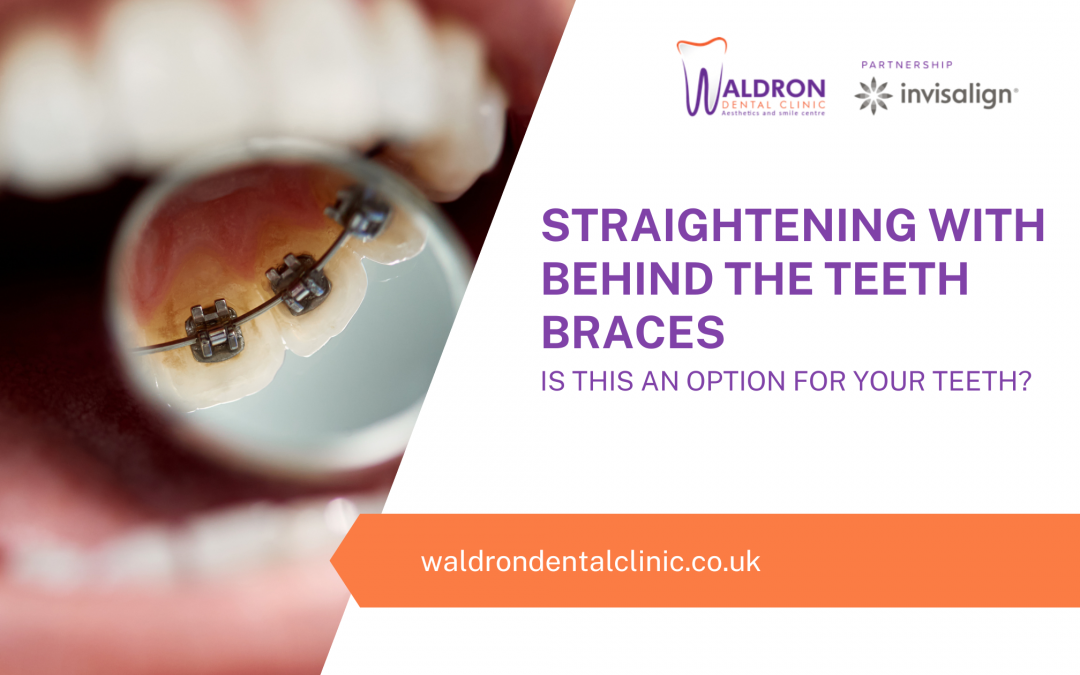When we think of straightening crooked or misaligned teeth, the frist option that comes to mind is conventional metal braces. Unfortunately, these braces are not liked by many, owing to their conspicuous metallic appearance and their discomfort.
But thankfully, traditional metal braces are not the only option available these days for straightening teeth. Instead, there are several other, aesthetically more pleasing and comfortable options that can be used. One such option are the lingual braces. Unlike conventional braces that are bonded to the front surface of the teeth, lingual braces are virtually invisible. But how do lingual braces work and are they a suitable option for straightening my teeth? If you are also seeking an answer to these questions, this blog is for you. So, continue reading to learn everything you need to know lingual or behind-the-teeth braces.
Can You Get Braces On The Back Or Behind Your Teeth?
When reading about lingual braces, the first thing that will come to your mind would be “is it possible to get braces on the back of the teeth?’ the answer is yes. These so-called lingual braces are bonded to the inner or the lingual (the surface of the teeth towards the tongue). Therefore, they are virtually invisible and don’t affect one’s appearance and smile.
What Is Lingual Orthodontics?
Lingual orthodontics refers to an orthodontic system in which the brackets are bonded to the inner surface of the teeth. Conventionally, braces are bonded to the front surfaces of the teeth, which makes them conspicuous and uncomfortable. On the other hand, lingual orthodontics offers a virtually invisible option for straightening teeth. In fact, both traditional and lingual braces work the same way. The only difference is the location of the bonding of the brackets.
What Are The Disadvantages Of Lingual Braces?
Lingual braces offer an obvious advantage of being inconspicuous over conventional braces. However, they also have certain drawbacks. For example, one of the most common drawbacks of lingual braces is their tendency to cause injury to the tongue. Moreover, lingual braces are also harder to clean than traditional braces. Finally, lingual braces are not suitable for individuals with a deep bite.
What Are The Pros And Cons Of Dental Braces?
Like every orthodontic treatment option, dental braces have their own merits and demerits. For example, some of the advantages of dental braces are:
- Suitable for treating even the most complicated orthodontic cases
- Treatment can be performed by general dentists
- Less costly than other treatment options
On the other hand, some of the drawbacks of dental braces are:
- Difficulty in ensuring optimal cleaning around the brackets
- Conspicuous appearance of the metal braces
- Tendency to cause injury to the oral soft tissues
- Tendency to develop white spots and cavities around the brackets
- Hard and sticky foods should be avoided with braces
What Are The Long-Term Disadvantages Of Having Braces?
The main long-term disadvantage of dental braces is the appearance of white spots and tooth decay. This is because it is very difficult to remove food debris from around the brackets. This can lead to plaque deposition, formation of teeth cavities and periodontal issues. Another long-term disadvantage of teeth braces is the development of bad breath due to an increased risk of gum disease.
How Effective Are Lingual Braces?
Lingual braces have the same design and function, just like traditional braces. So, they are also quite effective in straightening the teeth. These braces work through the generation of pressure on the teeth caused by the tension in the orthodontic wires. So, if you are thinking of straightening your teeth but don’t want to get traditional braces, you may consider lingual braces an effective alternative.
Why Didn’t The Orthodontist Put Braces On My Back Bottom Teeth?
Typically, brackets are placed on all the teeth up to the first molars in both jaws. However, in some cases, dentists choose to put brackets only on the front six teeth in both jaws. This is done in cases when the teeth have a mild misalignment that is localised only in the front region. So, in these cases, there is no need to put brackets on the lower back teeth.
Are Dental Braces Really Helpful For Teeth?
Dental braces are among the most effective and time-tested options for straightening crooked teeth. In fact, just a few years ago, they were the only option for correcting tooth misalignment issues. So yes, dental braces are effective. Moreover, they are an ideal treatment option for treating complex or complicated issues that cannot be treated with other orthodontic treatment options such as clear aligners.
Why Do My Teeth Feel Loose With Braces?
Braces wearers often complain that their teeth feel loose as soon as they start wearing braces. This is normal, and it does not indicate anything harmful. Teeth tend to become loose with braces because the braces force them to move within their sockets. So, for the teeth to move, the bone tissue around them is removed. So, while the teeth are moving, the teeth may appear loose. However, as soon as the treatment is complete the teeth have been repositioned and will no longer be loose, so, slight loosening of the teeth during orthodontic treatment is nothing to be worried about.
If you are considering orthodontic treatment for your crooked and misaligned teeth in New Cross, London, Waldron Dental Clinic should be your first choice. Why? Because we offer the highest-quality orthodontic services in town at affordable rates. So, what are you waiting for? Book an appointment today, and let us give you a healthy and lasting smile.








